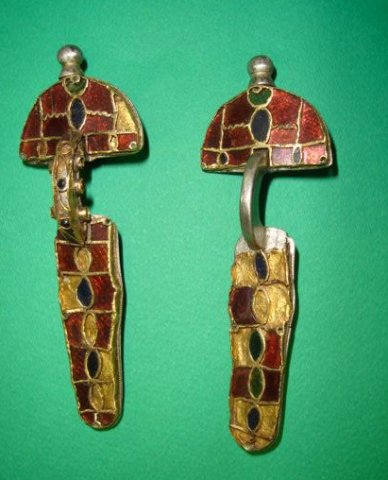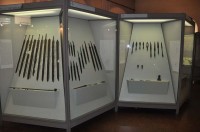Lombard Age
Second half of the 6th century AD – First half of the 8th century AD
Archaeological evidence from the Lombard period (568 - 756 AD) comes primarily from tombs and several churches.In Vicenza area, the two most important and extensive necropolises were discovered in Sovizzo and Dueville.Most exhibits come from excavations conducted by Giovanni Curti in Sovizzo in the early 20th century, uncovering at least two hundred tombs.
Among the male grave goods, notable items include damascened spathes and scramasaxes (single-edged sabers), bronze and iron belt elements inlaid with rich geometric and animalistic decorations, spearheads and shield bosses, one of which is decorated with stylized human figures, and beard and hair cutting shears.
Among the female grave goods, there are glass paste necklace beads, bronze earrings, and hairpins.
Common to both male and female graves are iron knives, flints and steels, and numerous combs, including an example with a case and an exceptional set of two combs with a comb case.
Among the ceramic, glass, and metal objects, noteworthy are a bronze basin and a bucket, probably used for pouring beer.
Two particularly valuable finds come from occasional excavations in Dueville in 1911: a gold ring with an engraved glass paste gem (currently not on display) and a gold-leaf cross with anthropomorphic decorations, which was sewn onto the deceased's shroud.
Also on display in the same room are two splendid Ostrogothic-era cloisonné-decorated stirrup fibulae from Villalta di Cittadella (Padua).

Image Gallery
 |
 |

